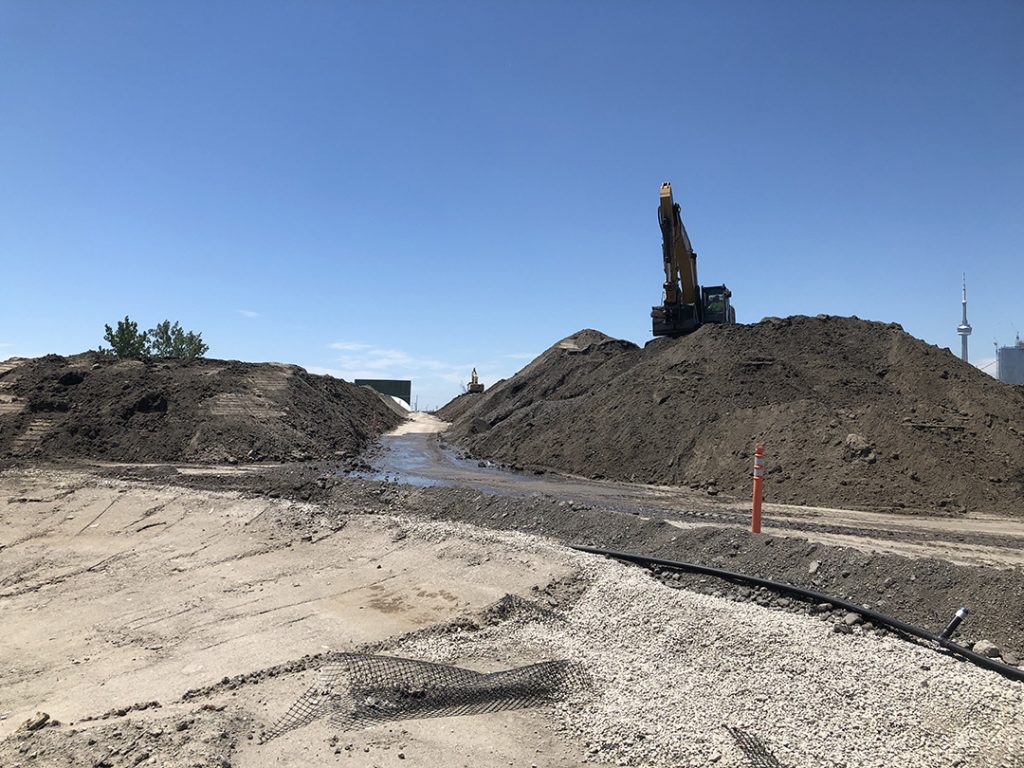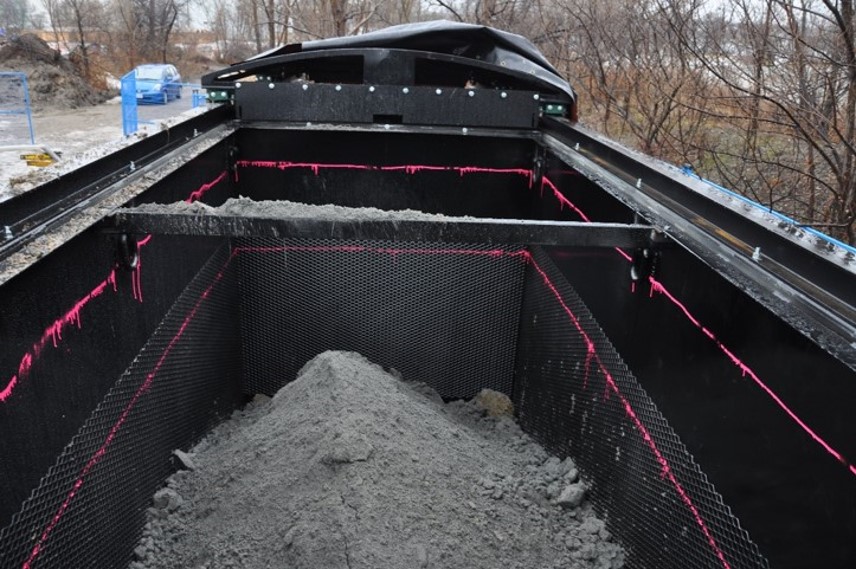We’ve tested technologies to help us clean soil as we excavate the new river valley. We’re now using two of these processes to treat soil on site: biopiling and smoldering. This will allow us to reuse the soil we excavate in the Port Lands to raise grades along the new river edge, green spillway and Keating Channel, protecting these lands from flooding.
Question about odour during the excavation? Click here for Frequently Asked Questions.
Biopiling

The large Soil Management Area towards the southern part of the site uses a process called biopiling to treat petroleum hydrocarbons (PHCs) using natural microbes that can be found in soil. This is an efficient, sustainable technology.
How does it work?
PHCs and other organic compounds are consumed as a food source by these soil microorganisms. This biological oxidation of organics, called biodegradation, produces energy which the microbes use to reproduce. This means that the energy in the contaminants themselves fuels the treatment process. The result: PHCs are converted into less harmful compounds, carbon dioxide, water and a small amount of inorganic salts.
These contaminant-degrading microorganisms are almost always present in soil. Biopiling is a controlled process that encourages optimal conditions for the growth and activity of microorganisms. Think of it as the process that turns milk to cheese. There are lots of ways to stimulate microbial growth in soil, including adjusting nutrients and moisture content, supplementing oxygen through mechanical mixing and adding bulking agents or heat.
QM Environmental teamed with Vertex Environmental Inc. of Cambridge, Ontario, to develop the biopiling approach for this project through pilot testing on site and lab-scale testing. Through this process, the team developed an innovative approach to treat a large amount of soil in a short time period.
This approach means that the soil treatment facility on site will be able to treat an estimated 325,000 m³ to 390,000 m³ of soil over two years.
Smoldering

We are also using smoldering to treat polycyclic aromatic hydrocarbon compounds, creosote, and heavy oil. Smoldering is a flameless form of combustion using heat from reactions occurring on the surface of a solid or liquid fuel. This is an efficient process, powered by the contaminants themselves.
How does it work?
Energy plus an oxidant like air are used to create smoldering combustion. Once ignited, smoldering combustion is self-sustaining. The heat energy required for the combustion of contaminants comes from the energy within the contaminants. The smoldering reaction occurs until the contaminant (fuel) is consumed or the air supply is interrupted, making this a safe, controllable process.
This project is using a patented smoldering technology, STARx (Self-sustaining Treatment for Active Remediation, ex-Situ) to treat contaminants like tars and heavy oils that don’t biodegrade quickly. The end product is benign compounds, carbon dioxide and water. This technology was chosen because it can effectively treat highly contaminated soil and treat soils with a high moisture content.
QM Environmental partnered with Savron Solutions, of Guelph, Ontario, to develop the specific STARx system we’re using on this project. This process can even treat contaminated peat, one of many challenges specific to the Port Lands.

